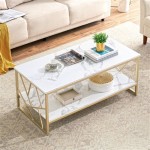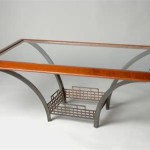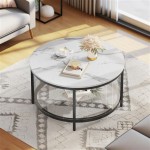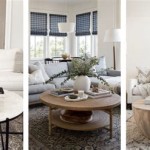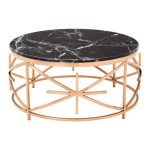Determining the Ideal Space Between a Sofa and Coffee Table
The arrangement of furniture within a living room considerably impacts both its aesthetic appeal and functional utility. One of the most crucial spatial relationships to consider is the distance between a sofa and a coffee table. This distance affects traffic flow, ease of access to the table, and the overall visual harmony of the room. Establishing the optimal distance requires careful consideration of several factors, including the size of the room, the dimensions of the furniture pieces, and the intended use of the space. Failing to address this spatial relationship adequately can lead to a cramped, awkward, or disconnected living environment.
The aim of this article is to explore the key considerations for determining the appropriate distance between a sofa and a coffee table. This exploration will provide a framework for creating a living room that is both visually pleasing and practically efficient.
Accessibility and Traffic Flow
One of the primary factors dictating the ideal distance between a sofa and a coffee table is the need for unimpeded accessibility and comfortable traffic flow. A space that is too narrow will create an obstacle, making it difficult to move around the room and potentially leading to accidental bumps or trips. Conversely, a space that is too wide can make it inconvenient to reach items on the coffee table from the sofa. The ideal distance allows individuals to navigate the space freely while also providing easy access to beverages, snacks, or remote controls placed on the table.
General recommendations typically suggest a distance of between 14 and 18 inches. This range provides enough space for people to comfortably walk between the sofa and the coffee table without feeling cramped. Individuals can also comfortably extend their legs without hitting the table. However, this range serves as a guideline, and adjustments may be necessary depending on the specific circumstances of the room and the individuals who will be using it.
Consider the primary users of the space. For instance, if the living room is frequently used by elderly individuals or those with mobility limitations, a slightly wider pathway may be advisable to ensure their safety and comfort. Similarly, if the room is often used by children, it is crucial to consider the potential for accidental collisions and adjust the spacing accordingly. Furthermore, assess the typical traffic patterns within the room. If the primary route to another part of the house passes directly between the sofa and the coffee table, a slightly wider pathway may be warranted to accommodate the flow of traffic.
Another factor to consider is the shape and size of the coffee table itself. A larger coffee table, particularly one with sharp corners, may require a slightly wider buffer zone to prevent accidental bumps. A round or oval coffee table, on the other hand, may allow for a slightly narrower space, as it presents less of a physical barrier. The height of the coffee table can also influence the perceived spaciousness of the room. A lower coffee table may make the space feel more open, while a taller coffee table can create a more enclosed feeling. These subtle considerations can significantly impact the overall comfort and functionality of the living room.
The position of other furniture pieces in the room can also affect the optimal distance between the sofa and the coffee table. If there are chairs or other seating arrangements facing the sofa, it is crucial to ensure that there is sufficient space between these pieces to allow for comfortable conversation and movement. Overcrowding the space with too much furniture can negate the benefits of carefully planned sofa-coffee table placement. A well-considered room layout prioritizes both functionality and aesthetic appeal, creating a space that is both inviting and practical.
Functional Use and Table Height
The intended function of the coffee table plays a crucial role in determining the appropriate distance from the sofa. If the coffee table is primarily used for serving food and beverages, a closer proximity to the sofa may be desirable to allow for easy reach. Conversely, if the table is primarily used for decorative purposes or for storing items like books and magazines, a slightly greater distance may be acceptable. The user should be able to set down a drink or reach for a snack comfortably without straining or having to lean excessively forward.
The height of the coffee table relative to the sofa is another important consideration. Ideally, the coffee table should be approximately the same height as the sofa cushions or slightly lower. This height differential allows for easy access to items on the table without having to reach too far up or down. A coffee table that is significantly lower than the sofa may require a closer proximity to allow for comfortable access, while a coffee table that is significantly higher may require a greater distance to prevent it from feeling overwhelming.
Consider the specific activities that will take place in the living room. If the room is frequently used for entertaining, a larger coffee table and a slightly greater distance from the sofa may be necessary to accommodate the needs of guests. If the room is primarily used for watching television, a smaller coffee table and a closer proximity to the sofa may be more suitable. The arrangement should facilitate comfortable viewing and easy access to remote controls and other essentials.
Assess whether the coffee table will be used for activities such as playing board games or working on a laptop. These activities may require a different height and distance than would be ideal for simply placing a drink. A coffee table that is too low can cause back strain during these activities, while a coffee table that is too far away can make it difficult to reach items on the table. Choosing a coffee table with an adjustable height mechanism can provide greater flexibility and adaptability to different needs.
The material of the coffee table can also be a factor in determining the appropriate distance from the sofa. A coffee table made of a delicate material, such as glass or marble, may require a slightly greater distance to prevent accidental damage. A coffee table made of a more durable material, such as wood or metal, may be able to withstand closer proximity to the sofa without risk of damage. The user should also consider the potential for spills and stains and choose a material that is easy to clean and maintain.
Room Size and Visual Balance
The overall size of the living room plays a critical role in determining the optimal distance between the sofa and the coffee table. In a smaller room, it is imperative to maximize space efficiency without sacrificing comfort. A coffee table that is too large or positioned too close to the sofa can make the room feel cramped and claustrophobic. In a larger room, a smaller coffee table positioned too far from the sofa can create a sense of disconnection and visual imbalance.
In a smaller living room, consider opting for a smaller coffee table or even foregoing a traditional coffee table altogether in favor of alternative options, such as side tables or ottomans. These alternatives can provide a similar level of functionality without taking up as much space. Another option is to choose a coffee table with a transparent or open design, which can help to create a feeling of spaciousness.
In a larger living room, a larger coffee table can help to anchor the seating area and create a more cohesive and inviting space. A coffee table with a bold design or a unique material can serve as a focal point and add visual interest to the room. However, it is crucial to ensure that the coffee table is not so large that it overwhelms the space or obstructs traffic flow.
The arrangement of other furniture pieces in the room can also affect the perceived size and balance of the space. Consider the placement of chairs, side tables, and lamps in relation to the sofa and the coffee table. These elements should be arranged in a way that promotes visual harmony and functional efficiency. Avoid overcrowding the space with too much furniture, as this can make the room feel cluttered and disorganized.
Consider the use of rugs to define the seating area and create a sense of cohesion. A rug that is large enough to encompass both the sofa and the coffee table can help to visually connect these elements and create a more unified and inviting space. The color and pattern of the rug can also be used to add visual interest and personality to the room. A well-chosen rug can significantly enhance the overall aesthetic appeal of the living room and create a more comfortable and inviting atmosphere.
The lighting in the room can also play a role in creating a sense of spaciousness and balance. Natural light can make a room feel larger and more open, while artificial light can be used to create a warm and inviting atmosphere. Consider the placement of windows and light fixtures in relation to the sofa and the coffee table. Ensure that there is adequate lighting to allow for comfortable reading and conversation, and that the lighting is not too harsh or glaring.

Living Room Design Tips Vern Yip

8 Space Planning For Living Rooms That Make Everyone Love Them

8 Space Planning For Living Rooms That Make Everyone Love Them

Design By Numbers Simple Standards To Instantly Improve Your Living Room Layout Cbc Life

How To Buy A Coffee Table Living Spaces

The Ultimate Coffee Table Size Guide Apt2b

Coffee Table Dimension Guide Ashley Home

How To Buy A Coffee Table Living Spaces
:strip_icc()/cdn.cliqueinc.com__cache__posts__268833__how-to-choose-a-coffee-table-268833-1538077811019-image.700x0c-7a56fb07e0084a48b51032071b7fa87b.jpg?strip=all)
Don T Make This Living Room Coffee Table Mistake

How Far Apart Should Furniture Be Spaced
